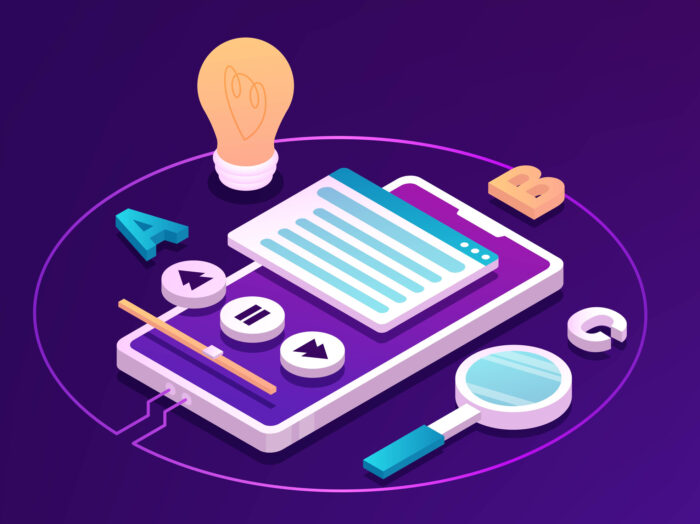Collaborative learning offers a modern approach to helping teams learn and work together more effectively. It can make a big difference in how quickly and efficiently businesses can adapt to new technologies and trends.
Our guide will explain what collaborative learning is, why it’s beneficial for businesses, and how to implement it in your organisation.
What is Collaborative Learning?
Collaborative learning is an educational approach in which employees work together to solve a problem, complete a task, or create a product. Unlike traditional methods that focus on individual achievement, collaborative learning emphasises teamwork and collective intelligence. Employees are grouped together, either physically or virtually, and are given tasks that require interdependence and communication.
The aim is to create an environment where sharing and discussion are encouraged. This not only helps in absorbing the new information but also in applying it practically. In a business setting, collaborative learning often involves multi-disciplinary teams coming together to contribute their expertise toward a common goal. This could be anything from adopting a new software system to improving workflow processes.
By leveraging the collective skills and experiences of its members, a team can often find solutions more quickly and effectively than individuals working alone. This becomes particularly important as businesses undergo digital transformations, where the smooth adoption and efficient use of new technologies can give a company a significant edge.
Why Collaborative Learning Works: The Theory Behind It
Collaborative learning isn’t just a trend; it’s backed by research and theory. One well-known perspective comes from educational theorist Lev Vygotsky. Vygotsky’s theory emphasises that social interaction plays a crucial role in learning. In simple terms, we learn better when we learn together.
In a business context, this means that employees can often gain deeper understanding and more practical skills when they collaborate. It allows for immediate feedback, sharing of diverse viewpoints, and a more engaged learning experience. In fact, the back-and-forth nature of teamwork closely mimics real-world job tasks, making the learning more directly applicable to daily work.
For companies investing in digital transformation, this is particularly valuable. Employees not only learn new software or tools faster but are also better prepared to solve the complex problems that often come with integrating new technologies into existing systems.
This approach to learning has even greater significance in today’s data-driven work environments. Information is often too complex for one individual to grasp fully. Collaborative learning enables the pooling of skills and knowledge, making it easier to interpret data, identify trends, and make informed decisions.
What are the benefits of collaborative learning?
Adopting a collaborative learning approach offers multiple advantages for businesses striving for operational efficiency and competitive advantage. Here are some of the key benefits:
- Faster Problem-Solving: When employees work together, they can solve problems more quickly than working alone. They can share different perspectives and approaches, which often leads to more effective solutions.
- Skill Development: Team-based learning allows members to learn from each other’s strengths and weaknesses. This can lead to improved communication skills, better project management, and other competencies important for the workplace.
- Enhanced Engagement: Employees are generally more engaged when they learn in a team setting. The interaction keeps the learning process interesting and often leads to better retention of information.
- Resource Efficiency: From a business standpoint, collaborative learning can also be cost-effective. Training materials and resources can be used by multiple employees at the same time, reducing the per-person cost of training.
- Seamless Transition to New Technologies: When teams learn together, they can more easily adapt to new software or systems. This makes the digital transformation process smoother, reducing downtime and boosting productivity.
Cooperative vs collaborative learning
- Both cooperative learning and collaborative learning involve group work, but there are some key differences between the two approaches.
- Structure
- Cooperative learning is more structured than collaborative learning. In cooperative learning, each team member has a specific role and set of tasks to complete. This is similar to how teams work in many businesses, where each employee has a specific job description.
- Collaborative learning, on the other hand, is more flexible. Team members decide how to work together to achieve their goals. This can be a good approach for tasks that require creativity and innovation.
- Learning Goals
- In cooperative learning, the focus is on the end product or the solution to a problem. In collaborative learning, the emphasis is on the process of working together. The goal is not just to solve a problem, but to learn how to work as a team.
- Assessment
- Cooperative learning often involves individual assessments, where each team member is graded on their part of the project. Collaborative learning is more likely to involve a group assessment, where the team as a whole is evaluated.
- Skill Sets
- Cooperative learning can be effective for tasks that require diverse skill sets, where each team member contributes a specific expertise. For example, a team might need to include a software developer, a graphic designer, and a project manager to complete a task.
- Collaborative learning is more about developing shared skills and knowledge. This makes it a good approach for tasks that all team members need to understand deeply, such as learning a new software program or implementing a new process.
- Applications in Business
- Cooperative learning is a good choice for tasks that require specialised skills, such as coding or data analysis. Collaborative learning is a good choice for broader organisational goals, such as improving communication or project management.
- Which approach is right for your business?
- The best approach for your business will depend on the specific task or goal you are trying to achieve. If you need your team to complete a task that requires specialised skills, cooperative learning may be a better choice. If you are trying to develop shared skills and knowledge, or improve teamwork, collaborative learning may be a better option.
How to Get Started: Tips for Using Collaborative Learning in the Workplace
Successfully implementing collaborative learning doesn’t happen overnight; it requires planning and strategy. Here are some practical steps to get you started:
1. Identify your goals
What do you want to achieve with collaborative learning? Are you trying to improve team communication, speed up the adoption of new software, or something else? Once you know your goals, you can start to design a program that will help you achieve them.
2. Choose the right tools
There are a variety of tools available to support collaborative learning, such as messaging apps, video conferencing software, and online learning platforms. Choose the tools that are best suited for your needs and budget.
3. Form groups carefully
When forming collaborative learning groups, it’s important to consider the skills and experience levels of each team member. A mix of backgrounds can create a more balanced learning environment.
4. Set clear guidelines
Before you start your collaborative learning program, make sure everyone knows the rules of the game. This includes things like how to communicate with each other, share information, and resolve conflicts.
5. Measure and adjust
Once your program is underway, it’s important to track its effectiveness. This can be done through feedback surveys, performance metrics, and other methods. Use this information to make necessary adjustments to the program and ensure that it’s meeting your goals.
Collaborative Learning: The Key to Unlocking Workforce Potential
With Omniplex Guide, you can create and deliver engaging learning experiences that promote collaboration and teamwork.
Here are just a few of the ways that our digital adoption platform can help you to unlock your workforce potential:
- Personalised onboarding: Provide new employees with a personalised onboarding experience that helps them to quickly learn the skills and knowledge they need to be successful.
- Standardised cross-functional training: deliver consistent, high quality training company-wide, ensuring skill proficiency across functions and departments.
- Team-based learning: Omniplex Guide can help you to create and deliver team-based learning activities that promote collaboration and teamwork.
If you’d like to know how Omniplex Guide can help your team, get in touch or book a free product tour.




